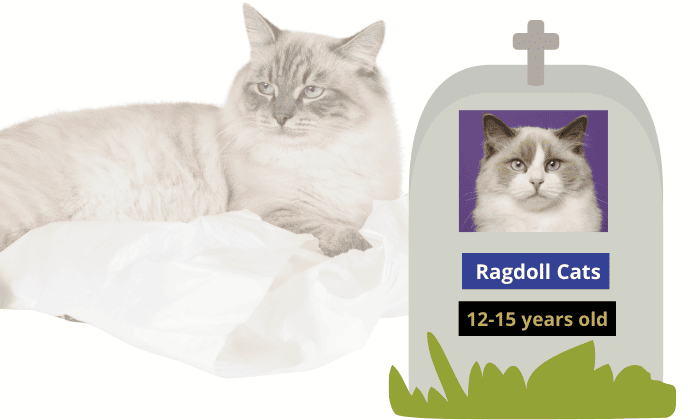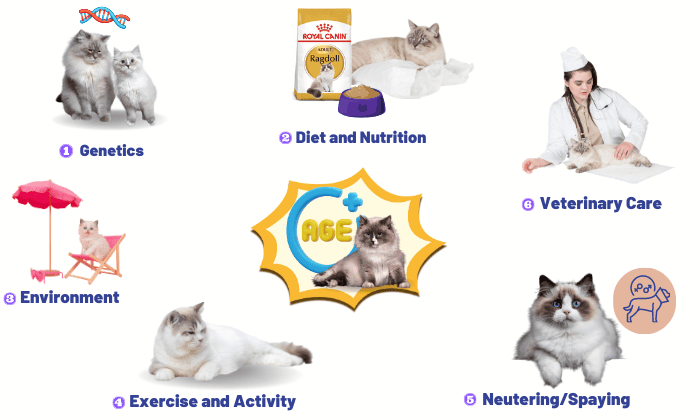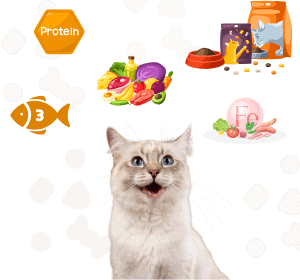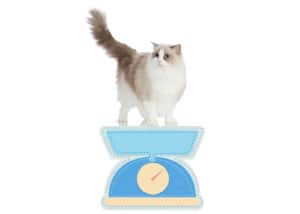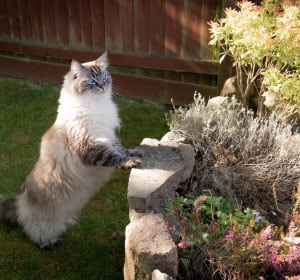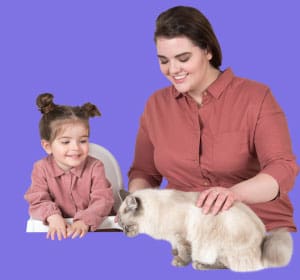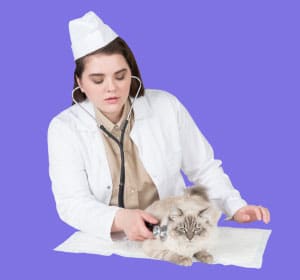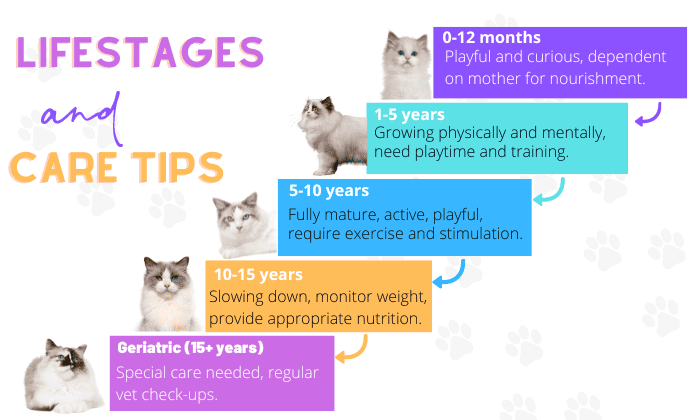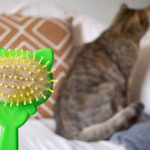As prospective owners consider welcoming a Ragdoll cat into their homes; one important question often arises: “How long do Ragdoll cats live?”. The average Ragdoll’s life expectancy is between 12 and 15 years; some Ragdolls have been known to live into their early twenties.
From genetic factors to environmental conditions and proper care, we’ll provide the insights you need to ensure your beloved Ragdoll companion’s happy and healthy life. So, let’s embark on this journey together and discover the lifespan of these intelligent creatures.
| Ragdoll Cats’ Overview | ||
 |
Official Name | Ragdoll |
| Common Name | Ragdoll | |
| Weight | 10 to 20 pounds | |
| Height | 9 to 11 inches | |
| Colors | seal, chocolate, red, blue, lilac, cream | |
| Lifespan | 12 to 15 years | |
| Temperament/ Characteristics | affectionate, calm, friendly | |
| Vocal Level | quiet | |
| Patterns | bi-color, van, mitted, colorpoint | |
Table of Contents
What’s the Average Lifespan of a Ragdoll Cat?
Ragdoll cats—including indoor Ragdoll cats—have an average lifespan of about 12-15 years. This means they live longer than the typical indoor cat. The Ragdoll cats’ lifespan fully depends on numerous variables, including the cat’s age when you adopted it and its breed, heredity, habitat, and diet.
Some felines have lived for over 20+ years with proper care and nourishment. As a result, if you provide a healthy lifestyle for your cat, you can give your pet the best chance of living a long and healthy life.
- Fun Facts about the Oldest Ragdoll Cat
Rosie, a ginger and Ragdoll mix, is turning 32 in June, 2023 and potentially could be the world’s oldest cat. Her owner, Lila Brissett, rescued Rosie in 1991, and they have shared a life together since then.
Rosie’s age, equivalent to 144 in human years, has prompted Guinness World Records officials to encourage Brissett to get in touch.
Despite her age, Rosie is still energetic and has all her teeth intact. She spends her days sleeping by the window, eating Purina One cat food, and caring for her basic needs.
6 Factors Influencing the Lifespan of a Ragdoll Cat
Several factors influence the lifespan of a Ragdoll cat, and understanding these elements can help you provide the necessary care and nourishment for your feline companion to thrive for approximately 15 years or more.
Here are the factors affecting your Ragdoll cat’s lifetime that you should consider:
- Genetics: The genetic makeup of a cat plays a significant role in determining its lifespan. Cats from healthy and long-lived lineages may have a better chance of living longer.
- Diet and Nutrition: Ragdoll health issues are usually caused by poor diet and nutrition, which can ultimately shorten their lifespan. Proper nutrition supports the immune system, organ function, and overall well-being.
- Environment: A calm, stress-free environment is essential for promoting a Ragdoll cat’s mental and emotional health. Chronic stress can lead to various health issues, including weakened immunity and digestive problems.
- Exercise and Activity: Obesity can lead to various health problems, including diabetes, heart disease, and joint issues. By promoting an active lifestyle, you can help prevent weight gain and reduce the risk of obesity-related conditions that can shorten their lifespan.
- Neutering/Spaying: Spaying or neutering a Ragdoll cat helps prevent unwanted pregnancies and reduces the risk of certain reproductive-related diseases, potentially leading to a longer and healthier life.
- Veterinary Care: Regular check-ups and preventive healthcare measures are essential. Routine veterinary visits can help detect and address any potential health issues early on, improving the cat’s overall quality of life and potentially extending its lifespan.
How to Help a Ragdoll Cat Live Longer
Ensuring a long and healthy life for your beloved Ragdoll cat is a top priority for any caring pet owner. Let’s explore practical tips that can contribute to the well-being and longevity of your Ragdoll companion.
1. Balanced Diet
A balanced diet is essential for the health and longevity of Ragdoll cats. Choose high-quality cat food rich in animal protein, vitamins, minerals, and fatty acids. Portion control is important to prevent obesity; freshwater should always be available.
Provide a high-quality, nutritionally balanced feed designed exclusively for cats. Consult a veterinarian about the proper portion sizes and nutritional requirements for your Ragdoll cat’s age, weight, and overall health.
2. Weight Management
Being overweight is one of the factors that can lead to Ragdoll cat diseases. Monitor their body condition and consult a veterinarian to determine the ideal weight.
Here’s what you need to do to control your cat’s weight:
- Practice portion control by measuring food portions and providing a balanced diet.
- Engage your cat in regular exercise to help burn calories and maintain a healthy weight.
- Regular veterinary check-ups will ensure proper weight management and overall well-being.
Careful attention to their weight allows Ragdoll cats to enjoy a healthier and happier life.
3. Environmental Enrichment
Environmental enrichment plays a vital role in promoting the well-being of Ragdoll cats. They can explore their surroundings by providing vertical spaces like cat trees or window perches.
Additionally, interactive toys, scratching posts, and hiding places engage their instincts and provide mental stimulation. Creating a safe, stimulating environment ensures a happy and fulfilled life for your Ragdoll companion.
4. Hydration
Proper hydration is crucial for the well-being of Ragdoll cats, and there are several key factors to consider:
- Providing fresh and clean water in multiple locations, using a water fountain, and incorporating wet food into their diet can help keep them hydrated.
- Monitoring water intake, encouraging drinking by using different bowl types, and separating water from food are important steps.
Ensuring adequate hydration can support their overall health and kidney function and prevent dehydration-related issues.
5. Mental and Emotional Well-Being
Promoting the mental and emotional well-being of Ragdoll cats involves various aspects. For example, regular play and social interaction strengthen your bond with your cat.
Establishing a routine, creating hiding places, and offering visual stimulation contribute to their sense of security and mental engagement. Considering feline companionship, when suitable, can provide additional social interaction. Addressing these factors can ensure your Ragdoll cat a happier and healthier life.
6. Regular Veterinary Care
Regular veterinary care is essential for the well-being of Ragdoll cats. You can ensure their overall health by staying up to date with vaccinations, scheduling wellness exams, and following parasite prevention protocols. Dental care, spaying or neutering, and senior care play important roles in their well-being.
Each cat is unique, and individual factors may influence its lifespan. Providing a loving and nurturing environment and proper care and attention can significantly contribute to your Ragdoll cat’s longevity and overall well-being.
By following these tips, you’ll prevent common illnesses that may cause a premature death in Ragdolls, such as heart problems, obesity, urinary tract disease, and polycystic kidney disease.
Life Stages of Ragdoll Cats and Care Tips
Like all domestic cats, Ragdoll cats go through different life stages as they grow and mature. These life phases can be categorized as follows:
- Kitten (0-12 months): This is the stage when Ragdoll kittens are most playful and curious. They are dependent on their mother for nourishment and socialization.
- Young Adult (1-5 years): Ragdoll cats continue to grow physically and mentally in this stage. Providing them with appropriate playtime, socialization, and training is essential to encourage their healthy development.
- Mature Adult (5-10 years): The Ragdolls are fully mature physically and mentally. They are generally active, healthy, and at their most playful. They require regular exercise, mental stimulation, and a balanced diet to maintain their overall well-being.
- Senior (10-15 years): As Ragdoll cats enter this stage, they may show signs of slowing down. It is important to monitor their weight and provide appropriate nutrition to ensure their health and prevent age-related conditions.
- Geriatric (15+ years): Ragdoll cats in their geriatric stage require special care and attention. They may experience age-related health issues. Regular veterinary check-ups, a suitable diet, and a comfortable environment are crucial during this stage to provide them with the best possible quality of life.
- Regular veterinary check-ups, a balanced diet, exercise, and a nurturing environment are essential for preventing Ragdoll cat problems and maintaining the well-being of your Ragdoll cat.
Related articles about Ragdoll Cat:
- Maine coon cat vs Ragdoll cat: Which Breed Suits You?
- Ragdoll Cat vs Siamese Cat: Similarities and Differences
FAQs
Can Ragdoll Cat Live to Be 20?
Yes, Ragdoll cats can live up to 20 years or longer with proper care and a healthy lifestyle. While the lifespan of a Ragdoll cat is typically around 12-15 years on average, some individuals can surpass this and reach their twenties.
Does Gender Affect Ragdoll’s Life Expectancy?
Gender typically does not significantly impact the life expectancy of these felines. However, some sources say female Ragdoll cats may live slightly longer than male Ragdoll cats.
Conclusion
It’s not hard to figure out how long do Ragdoll cats live. They live between 12 and 16 years, and with good care, some Ragdolls can live into their late teens or even early twenties.
Genetics, diet, exercise, veterinary care, and overall well-being play a significant role in how many years they can live. By providing them with a loving home, regular veterinary check-ups, a balanced diet, and a stimulating environment, you can help maximize their lifespan and enjoy many happy and healthy years together.

I am Amy Sawy, a Doctor of Veterinary Medicine (DVM) graduate from the University of Kansas. y husband, Dr. Plummer, and I own a veterinary clinic in Phillipsburg, Kansas. In addition to my professional background, I am a devoted pet owner myself, with a household that includes dogs, rodents, and most notably, cats – a total of five felines in my home.
In 2020, I joined an organization as a professional writer, leveraging my experience and collaborating with my team to deliver the most valuable information for your cat’s care.



